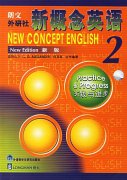加拿大简介_加拿大的英文介绍初中水平的,短一点
编辑:高中作文网精选知识
Canada is the second largest country in the world.It is larger than the USA and reaches nearly a quarter of the way round the earth.The distance from east to west is over 5,500 kilometres and the country covers six of the world's 24 time areas.
加拿大是世界上占地面积第2的国家.面积比美国大,并且领土的延伸接近地球赤道的4分之1.从东部到南部的距离超过5500千米.并且加拿大覆盖了世界上24个时区中的6个.
The population of Canada is about 29 million and the capital is Ottawa.There are two official languages,French and English.The first travellers arrived from England in 1497.Settlers from France reached Canada in 1534.For two centuries English and French settlers struggled against each other to control the country.Today,one province of Canada is French-speaking.The TV and radio programmes there are in French.There are French restaurants,and all the teaching in schools is done in French.
加拿大的人口总数约为2900万,首都为渥太华.其官方语言有2种,法语和英语.1497年,从英格兰来的首批移居者(拓荒者)来到了这儿,1534年,从法国来的移居者也到达此地.这来自两个国家的移居者为了成为这块土地的主宰者而互相征战.今天,加拿大有一个说发语的省,电视和收音机里节目都是用法语播放的.这儿有法国参观,所有的学校的教学都采用法语进行.
Canada has one third of the world's supply of fresh water.There are five great lakes in the south,and there are many others,especially in the north.Most of the electricity is produced by water.The country has a great deal of coal,oil and natural gas,and these are all exploited for energy.
加拿大拥有世界淡水资源的3分之1.在加拿大的南面有5大名湖.
并且在其他地方,尤其是在北部,还有许多湖.加拿大主要是考水力发电.它拥有大量的煤,石油,天然气资源.这些都是完全可以作为能源来利用开发.
Much of the country is covered by forests,and wood is cut and sold all over the world.Canada is also the world's biggest producer of the kind of paper which is used for newspapers.Fishing is also very important for Canadians.Fish from the east and west coasts is sold to many other countries.
加拿大的大部分面积被森林覆盖,砍下来的木材被运往世界各地.加拿大还是世界上供应制作报纸所需纸张的最大的供应者.
渔业在加拿大也是非常重要的.来自东部和西部海岸的鱼被销售往世界其他国家.
其他回答
你好,
带翻译的短文介绍:
Canada is the second largest country in the world. It is larger than the USA and reaches nearly a quarter of the way round the earth. The distance from east to west is over 5,50...
其他类似问题
问题1:求加拿大简介,并配上英文翻译
加拿大简介
加拿大-全球最适宜居住的国家
据联合国发表的报告,加拿大在就业水平、人均国民生产总值、收入、教育及卫生水平等综合指标在全球160多个国家中名列第一.
优美的自然环境和安全先进的生活方式
加拿大位于北美洲的北半部,总面积 997万平方公里,仅次于俄罗斯,是世界第二大国.人口2900多万,是世界上平均人口密度最低的国家之一,每3人占有一平方公里的土地.89%的土地没有永久性居民点.南部与美国为邻约5000公里,石油、矿产、木材、海产、水利资源十分丰富.加拿大四季分明,西面受太平洋季风的影响,四季宜人春季郁金香花争艳,夏季阳光明媚,秋季枫叶层林尽染,冬季万里雪飘,极具风情.
加拿大是由十个省和两个地区组成的联邦国家.民族构成一英裔、法裔、荷兰裔、德裔、波兰裔和华裔.官方语言为英语和法语.
加拿大有26个人口超过10万的市区和3个人口超过100万的城市.其中不少是北美洲最安全、最清洁、风光最美的市中心区.加拿大城市的严重犯罪率不到美国城市的一半.更为人称道的是多个不同种族的人们在一个国际性的环境中和睦相处.政府和工业界致力保持空气和食品的清洁,共同努力维护健康的环境.
加拿大的城市都有高素质的歌剧院、乐团和舞蹈团、美术馆、博物馆以及公共图书馆.加拿大城市有国际著名的芭蕾舞团、歌剧团和交响乐团.同时亦经常邀请世界各国最优秀的艺术家到访演出.加拿大政府对艺术的人均补助位于世界前列.加拿大的城市融合了欧洲、亚洲、拉丁美洲和非洲的各种文化.例如,温哥华是众多的亚裔人聚居之地;多伦多融合了欧、亚及其他文化;魁北克则为北美洲添上一份英、法双语的欧洲风味.
加拿大的气候各地不一,往往令预计天气较冷的访客诧异.全国绝大多数人口聚居在离美国边境 250公里以内的地区,而加拿大最南部的地区与美国加州北部处于同一纬度.因此,加拿大各大城市的气候多数与美国北部或北欧地区相似.加拿大的城镇提供舒适的生活设施,但是与其他国际性商业中心相比,生活费用确保持在很容易负担的水平上.
名列世界前茅的经济和科技发展水平
加拿大是西方七国之一,工业生产自动化、电气化和现代化水平在世界各国中处于领先地位.农业生产专业化、商品化和现代化的程度也很高,加拿大在电话、微波、卫星、光纤通讯等方面拥有世界先进水平,在航天、微电子工业和生物技术方面亦具有相当水平.加拿大的交通很方便,拥有铁路10万公里、公路73万公里、900 家航空公司和600个大型机场.
理想的投资之地
加拿大是个贸易强国.受过良好教育的劳动力以及合理的生产成本,加上政府在政策的支持,国际人士对加拿大的商业投资环境充满信心.
加拿大在七大工业国中经济增长强劲,通货膨胀率长期低于2%.生活标准指数名列第三位.许多未来的主导行业已经对加拿大经济作出了显著贡献.这些行业包括:通讯设备、激光产品、环保技术、生物技术、制药、航天和电脑软件等高科技工业.
许多国际企业正越来越多地以加拿大作为研究与发展的中心.加拿大是世界最富裕的市场.从1994年1月1日生效的《北美自由贸易协定》让加拿大的企业得到了无可比拟的便利.充裕的原料、廉价的能源、低廉的商业楼宇、先进高效的基础设施、政府的少干预和为支援中小企业、技术与研究开发计划制定的优惠政策,使加拿大成为世界少有的理想投资地.
完备的教育体系
加拿大提供免费的中小学教育.小学教育注重教育学生以积极参与的态度去学习,入学条件简单,主要以学生居住地、年龄分配就读学校.对新移民子弟,学校也会安排ESL 英语课程.小学课程根据各省教育厅指示编排,学校对学生的学习成绩和学生的生活礼仪一样看重.希望培养出来的学生能均衡发展;加拿大的中学教育一般为 5-7年,只需修完30个学分,每学分上课110 小时,就能取得中学毕业证书.低年级课程科目相同,高年级课程有较大弹性,所学科目会有所不同.学校有学生顾问协助学生规划未来.学校还组织各种社团活动,让学生在各方面综合发展.加拿大的高等教育可分为社区学院、大学及研究所,外籍学生及新移民通常要先修语言课,大学课程通常为3-5年.分一般学士及荣誉学士两种.全加拿大有88所大学及200多所社区学院.这些学校的入学资格由学生自定.学生分别向大学申请,没有全国性联考.硕士课程方面,学生入学必须具备相关学科的大学程度.
世人羡慕的社会福利体系
加拿大是高福利国家,费用由联邦政府承担.尽管各省的具体规定不同,但社会福利基本一致.包括:
家庭津贴:凡有18岁以下儿童之父母均可享受.具体金额视家庭收入高低而定;
日托津贴:若小孩父母均工作,又不能付日托全费,可申请日托津贴;
失业保险:多数在加拿大工作的人都受失业保险保障.失业可领取失业保险金.
养 老 金:65岁以上,在加拿大居住满10年,可领取全额养老金;
退 休 金:在工作期间供纳退休金税的人士,可申请退休金;
医疗保险:加拿大实施全民保健计划,居民享受免费医疗服务;
加拿大护照通行全球
加拿大对全世界所有够条件的人打开大门,每年接受移民及难民超过20万,其中独立技术移民约占8 万人左右,大部分来自亚洲.华人移民加拿大已经有 100多年的历史,目前华人占全国人口5%,华人投资包括银行、房地产、酒店、百货商场、电子通讯、电子计算机等,华人就业机会甚佳,从事高级白领工作的人越来越多,华语成为英语、法语之后的第三大语言,华人的地位也越来越高.
多元文化
加拿大实行多元文化、多民族和平共处,不象澳洲那样反对从亚洲移民且有较多的种族歧视.在多伦多、温哥华等大城市,华人数量已超过50万人.
较多的个人发展机会
移民加拿大后,四年时间中在加拿大居住满三年,可申请入籍成为加拿大公民.持加拿大护照可免签证自由往来美国、澳大利亚、新西兰、英国、德国、意大利、比利时、荷兰、奥地利、西班牙、葡萄牙、丹麦、瑞典、芬兰、挪威、希腊、以色列、沙特、香港、澳门、日本、台湾、新加坡、马来西亚、巴西、委内瑞拉等一百多个国家和地区.移民加拿大后,若想转入美国发展,也十分容易.
Canada
Canada, independent nation (2001 pop. 30,007,094), 3,851,787 sq mi (9,976,128 sq km), N North America. Canada occupies all of North America N of the United States (and E of Alaska) except for Greenland and the French islands of St. Pierre and Miquelon. It is bounded on the E by the Atlantic Ocean, on the N by the Arctic Ocean, and on the W by the Pacific Ocean and Alaska. A transcontinental border, formed in part by the Great Lakes, divides Canada from the United States; Nares and Davis straits separate Canada from Greenland. The Arctic Archipelago extends far into the Arctic Ocean.
Canada is a federation of 10 provinces—Newfoundland and Labrador, Nova Scotia, New Brunswick, Prince Edward Island, Quebec, Ontario, Manitoba, Saskatchewan, Alberta, and British Columbia—and three territories—Nunavut, the Northwest Territories, and the Yukon Territory. Canada's capital is Ottawa and its largest city is Toronto. Other important cities include Montreal, Vancouver, Edmonton, Calgary, Winnipeg, Hamilton, and Quebec.
Land
Canada has a very long and irregular coastline; Hudson Bay and the Gulf of St. Lawrence indent the east coast and the Inside Passage extends along the west coast. The ice-clogged straits between the islands of N Canada form the Northwest Passage. During the Ice Age all of Canada was covered by a continental ice sheet that scoured and depressed the land surface, leaving a covering of glacial drift, depositional landforms, and innumerable lakes and rivers. Aside from the Great Lakes, which are only partly in the country, the largest lakes of North America—Great Bear, Great Slave, and Winnipeg—are entirely in Canada. The St. Lawrence is the chief river of E Canada. The Saskatchewan, Nelson, Churchill, and Mackenzie river systems drain central Canada, and the Columbia, Fraser, and Yukon rivers drain the western part of the country.
Canada has a bowl-shaped geologic structure rimmed by highlands, with Hudson Bay at the lowest point. The country has eight major physiographic regions—the Canadian Shield, the Hudson Bay Lowlands, the Western Cordillera, the Interior Lowlands, the Great Lakes–St. Lawrence Lowlands, the Appalachians, the Arctic Lowlands, and the Innuitians.
The exposed portions of the Canadian Shield cover more than half of Canada. This once-mountainous region, which contains the continent's oldest rocks, has been worn low by erosion over the millennia. Its upturned eastern edge is indented by fjords. The Shield is rich in minerals, especially iron and nickel, and in potential sources of hydroelectric power. In the center of the Shield are the Hudson Bay Lowlands, encompassing Hudson Bay and the surrounding marshy land.
The Western Cordillera, a geologically young mountain system parallel to the Pacific coast, is composed of a series of north-south tending ranges and valleys that form the highest and most rugged section of the country; Mt. Logan (19,551 ft/5,959 m) is the highest point in Canada. Part of this region is made up of the Rocky Mts. and the Coast Mts., which are separated by plateaus and basins. The islands off W Canada are partially submerged portions of the Coast Mts. The Western Cordillera is also rich in minerals and timber and potential sources of hydroelectric power.
Between the Rocky Mts. and the Canadian Shield are the Interior Lowlands, a vast region filled with sediment from the flanking higher lands. The Lowlands are divided into the prairies, the plains, and the Mackenzie Lowlands. The prairies are Canada's granary, while grazing is important on the plains.
The smallest and southernmost region is the Great Lakes–St. Lawrence Lowlands, Canada's heartland. Dominated by the St. Lawrence River and the Great Lakes, the region provides a natural corridor into central Canada, and the St. Lawrence Seaway gives the interior cities access to the Atlantic. This section, which is composed of gently rolling surface on sedimentary rocks, is the location of extensive farmlands, large industrial centers, and most of Canada's population. In SE Canada and on Newfoundland is the northern end of the Appalachian Mt. system, an old and geologically complex region with a generally low and rounded relief.
The Arctic Lowlands and the Innuitians are the most isolated areas of Canada and are barren and snow-covered for most of the year. The Arctic Lowlands comprise much of the Arctic Archipelago and contain sedimentary rocks that may have oil-bearing strata. In the extreme north, mainly on Ellesmere Island, is the Innuitian Mt. system, which rises to c.10,000 ft (3,050 m).
Canada's climate is influenced by latitude and topography. The Interior Lowlands make it possible for polar air masses to move south and for subtropical air masses to move north into Canada. Hudson Bay and the Great Lakes act to modify the climate locally. The Western Cordillera serves as a climatic barrier that prevents polar air masses from reaching the Pacific coast and blocks the moist Pacific winds from reaching into the interior. The Cordillera has a typical highland climate that varies with altitude; the western slopes receive abundant rainfall, and the whole region is forested. The Interior Lowlands are in the rain shadow of the Cordillera; the southern portion has a steppe climate in which grasses predominate. S Canada has a temperate climate, with snow in the winter (especially in the east) and cool summers. Farther to the north, extending to the timberline, is the humid subarctic climate characterized by short summers and a snow cover for about half the year. The huge boreal forest, the largest surviving remnant of the extensive forests that once covered much of North America, predominates in this region. On the Arctic Archipelago and the northern mainland is the tundra, with its mosses and lichen, permafrost, near-year-round snow cover, and ice fields. A noted phenomenon off the coast of E Canada is the persistence of dense fog, which is formed when the warm air over the Gulf Stream passes over the cold Labrador Current as the two currents meet off Newfoundland.
People
About 40% of the Canadian population are of British descent, while 27% are of French origin. Another 20% are of other European background, about 10% are of E or SE Asian origin, and some 3% are of aboriginal or Métis (mixed aboriginal and European) background. In the late 1990s, Canada had the highest immigration rate of any country in the world, with more than half the total coming from Asia. Over 75% of the total population live in cities. Canada has complete religious liberty, though its growing multiculturalism has at times caused tensions among ethnic and religious groups. About 45% of the people are Roman Catholics, while some 40% are Protestant (the largest groups being the United Church of Canada, Anglicans, and Presbyterians). English and French are the official languages, and federal documents are published in both languages. In 1991, about 61% of Canadians cited English as their mother tongue, while 24% cited French.
Economy
Since World War II the development of Canada's manufacturing, mining, and service sectors has led to the creation of an affluent society. Services now account for 66% of the GDP, while industry accounts for 31%. Tourism and financial services represent some of Canada's most important industries within the service sector. However, manufacturing is Canada's single most important economic activity. The leading products are transportation equipment, pulp and paper, processed foods, chemicals, primary and fabricated metals, petroleum, electrical and electronic products, wood products, printed materials, machinery, clothing, and nonmetallic minerals. Industries are centered in Ontario, Quebec, and, to a lesser extent, British Columbia and Alberta. Canada's industries depend on the country's rich energy resources, which include hydroelectric power, petroleum, natural gas, coal, and uranium.
Canada is a leading mineral producer, although much of its mineral resources are difficult to reach due to permafrost. It is the world's largest source of nickel, zinc, and uranium, and a major source of lead, asbestos, gypsum, potash, tantalum, and cobalt. Other important mineral resources are petroleum, natural gas, copper, gold, iron ore, coal, silver, diamonds, molybdenum, and sulfur. The mineral wealth is located in many areas; some of the most productive regions are Sudbury, Ont. (copper and nickel); Timmins, Ont. (lead, zinc, and silver); and Kimberley, British Columbia (lead, zinc, and silver). Petroleum and natural gas are found in Alberta and Saskatchewan.
Agriculture employs about 3% of the population and contributes a similar percentage of the GDP. The sources of the greatest farm income are livestock and dairy products. Among the biggest income-earning crops are wheat, oats, barley, corn, and canola. Canada is one of the world's leading agricultural exporters, especially of wheat. Manitoba, Saskatchewan, and Alberta are the great grain-growing provinces, and, with Ontario, are also the leading sources of beef cattle. The main fruit-growing regions are found in Ontario, British Columbia, Quebec, and Nova Scotia. Apples and peaches are the principal fruits grown in Canada. More than half of the total land area is forest, and Canadian timber production ranks among the highest in the world.
问题2:用英文介绍加拿大的天气
加拿大幅员辽阔,南部与美国接壤,东,西,北部由大西洋,太平洋和北冰洋所环绕,海岸线漫长曲折,多峡湾和岛屿.加拿大阳光充沛、四季分明.3月中旬至6月下旬为春季,6月下旬至9月中旬为夏季,9月中旬至12月下旬为秋季,12 月下旬至来年3月中旬为冬季.大多数地区的气候类似中国东北地区.
加拿大南部植物多在三月开始发芽,四、五月开花.但在西海岸的温哥华和维多利亚春季的到来要早两个月左右,是加 拿大冬天最短、最温和的地区.按官方的划定夏天是开始于六月二十一日,但对大多数加拿大人而言,七、八月才被认为 是夏天.在加拿大南部气温一般都在20C度以上,有时会超过30C度.第一个霜冻的夜晚的出现被定为秋天的开始.通常是九月中旬.九月下旬到十月树木开始落叶.秋天有时也多雨.除西南部海岸地区外,大部分地区一般都在十一月开始下雪.温哥华和维多利亚一年只有十二月和一月有几天气温在零度以下,其他地区十二月至三月中旬一般被雪覆盖.
由于加拿大幅员辽阔,各地气候差异很大.一般来说,西部的不列颠哥伦比亚省(其中包括温哥华市)四季气候宜人,冬暖夏凉.加拿大第一大城市多伦多的气候类似于北京,但冬季较长且多雪,而夏季则无酷暑.首都渥太华及魁北克省会魁北克市的气候相当于中国的长春、哈尔滨.但由于加拿大先进的冬季除雪及取暖措施,那里的冬天并不使人感觉很冷.
提供中文,找强人给你翻译吧!我要下线了!
问题3:急.求加拿大英文介绍,做报告用ㄉ///////////////.英文ㄉ,小六程度,最好有中英对照THX[英语科目]
多伦多(Toronto)是加拿大安大略省的省会,大多伦多地区是由多伦多市( CITY OF TORONTO )、杜兰区( DURHAM REGION )、约克区( YORK REGION )、皮尔区( PEEL REGION )及荷顿区( HALTON REGION )组成,共有人口430多万,面积632平方公里.多伦多市地处世界最大淡水湖群--北美五大湖的中心安大略湖的西北岸,地势平坦,风景秀丽.有屯河和恒比河穿流其间,船只可由这里经圣劳伦斯河进入大西洋,为加拿大大湖区一重要港口城市.多伦多原是印第安人在湖边交易狩猎物品的场所,久而久之,逐渐成了人们汇集之地.“多伦多”在印地安语中是汇集之地的意思.1750年法国殖民者建贸易港和要塞.1867年成为省会.铁路交叉点.国际航空站.圣劳伦斯航道建成后,成为货物集散中心.金融、商业、工业、教育和文化中心.工业由尼亚加拉水电站供应电力.主要有肉类加工、飞机制造、农业机械、印刷、电工器材等部门.教堂很多,有“教堂城”之称.CN电视塔建成于1976年,高553.3米,是世界最高电视塔之一.皇家安大略省立博物馆藏有丰富的中国古代美术工艺品.有全国最大的多伦多大学.大多伦多由市中心区向外伸延,著名的卫星城市有约克、北约克、东约克、士嘉堡及伊陶碧谷等.多伦多又是加拿大的重要财经中心,是全国性大机构的总部所在地.“多伦多证券交易所”是北美洲活跃的股票市场之一.而且它还是报业中心,全国性日报及全国市报中最大的均在多伦多出版.
Toronto (Toronto) is the capital of Ontario,Canada,the Greater Toronto Area by the city (CITY OF TORONTO),Tulane Area (DURHAM REGION),York Region (YORK REGION),Peel (PEEL REGION) and the Netherlands Dayton Area (HALTON REGION),with a total population of over 430 million,covering 632 square kilometers.Toronto,the world's largest freshwater lake located in groups - the centre of the North American Great Lakes Ontario's northwestern shore,the flat terrain,beautiful scenery.Toutunhe and a constant flow through the river than the meantime,the vessels could be here by Kulaolunshihe entered the Atlantic Ocean,the Great Lakes region for Canada an important port city.Toronto was originally Indians hunting items in the lake trading places,the passage of time,people gradually became pooled land."Toronto" in the Indian languages,is the meaning of the pool.1750 French colonialists built forts and trading port.1867 became the capital.Railway crossing point.International Air Station.St.Lawrence waterway,upon completion,a cargo hub.Financial,commercial,industrial,educational and cultural center.Niagara industry from the supply of electricity from hydropower stations.Major meat processing,aircraft manufacturing,agricultural machinery,printing,electrical equipment,and other departments.Many churches,"churches City," said.CN Tower was built in 1976,and 553.3 meters high,is one of the world's highest television tower.Royal Ontario Provincial Museum is rich in ancient Chinese art crafts.Toronto is the country's largest university.Greater Toronto extending outward from the city centre,the famous satellite city of York,North York,East York,Scarborough and Fort Pitt Valley pottery such as Iraq.Toronto,Canada is an important financial centre,is a national headquarters of large corporations."Toronto Stock Exchange" North America is one of the active stock market.Press Centre and it is,the national daily newspaper and the city are reportedly the largest of the publication in Toronto
问题4:求关于加拿大的英文简介要带翻译的.急需.只要是加拿大的哪方面都行.
Canada is the world's longest coastline in the country.The southern border with the United States,the 8,892-km-long border.Across the northern part of the sea with Russia.As the cold northern climate,only 12% of the land suitable for farming.Therefore,most of Canada's 30 million people live in a mild climate,a few hundred kilometers from the southern boundary of the strip of territory,especially with the United States bordering the lakes and St.Lawrence region,flat,fertile land and rich natural resources.Canada is the most densely populated,most concentrated in the industrial and agricultural areas.Canadian lakes.If Xiatianfei over Northern Ontario or Manitoba,you will see the water than on land,and countless large and small lakes.According to estimates,Canada has the world's seventh volume of fresh water.In addition to the lakes connected with the United States and Canada,there are also many rivers.Canada is a very rich amount of rain and snow in the country have access to adequate water,trees and crops.thus grow lush busy.And pomegranate,a dazzling Xuefeng scenery is world-renowned.Canada's forest cover to 44% of the nation's total area,after Russia and Brazil,ranking third in the world.Canada is rich in mineral resources,is a world apart from the United States and Russia,one of the biggest mines.Canada has five geographical regions.Is the eastern Atlantic regions,the central area,grassland,the west coast region and the northern areas.Eastern areas to fisheries,agriculture,forest,mining,etc.; The central provinces of Ontario and Quebec is the most densely populated areas,Canada accounted for three-quarters of the industry are located here.Savanna including Manitoba.Saskatchewan moderate Alberta province,where flat land is fertile and rich in energy resources.British west coast region,is a famous mountain and forest areas,timber,fruits,rich in marine resources and other assets; from the northern Yukon and Northwest Territories district composed abounds in oil,natural gas,gold,lead and zinc.History :the former residence of the Indians and Inuit.Into the 16th century,the British colonial government,and then he was ceded to Britain.1867,the British Canadian province of New Brunswick as a joint federal and provincial Nuowasike homes.Britain became the first Dominion.Since then,other provinces are joining the Federation.1926,the British recognized the increase of "equal status",plus the right to receive independent diplomacy.In 1931 and became member of the Commonwealth,the Board has agreed with the British Council equal legislative powers,but no constitutional amendment rights.1982,Britain's Queen signed the "Constitution Act of Canada," Canadian Parliament was constitutional,the power of revising the constitution.
翻译:
加拿大是世界上海岸线最长的国家.南部与美国接壤,国境线长达8892公里.北部隔海与俄罗斯相望.
由于北部的严寒气候,只有12%的土地适合耕种.因此,加拿大的三千万人口大多居住在气候温和,距离南部边界几百公里以内的狭长领土内,尤其是与美国接壤的湖群和圣劳伦斯地区,地势平坦、土地肥沃、物产丰富,是加拿大人口最稠密、工农业最集中的地区.
加拿大湖泊众多.如果在夏天飞过曼尼托巴或北安大略,你将看到水面多于陆地,大大小小的湖泊不计其数.据估测,加拿大拥有全世界七分之一的淡水量.除了与美国相连的五大湖,加拿大还有众多的河流.加拿大是一个雨雪量都非常丰富的国家,林木和农作物都能得到充分的水量,因而生长得茂密繁盛.而变化多端,光彩夺目的雪峰景色,更是举世闻名.
加拿大的森林覆盖面积为占全国总面积的44%,仅次于俄罗斯和巴西,居世界第三位.加拿大有丰富的矿藏,是世界上除美国和俄罗斯以外最大的产矿国之一.
加拿大有五大地理区.分别是东部大西洋区、中部区、草原区、西海岸地区和北部区.东部区以渔业、农业、森林、 采矿业等为主;中部的安大略和魁北克省是人口最密集的地区,占加拿大四分之三的制造业都位于这里;草原区包括曼尼托巴、萨斯喀彻温和阿尔伯达省,这里土地平坦肥沃,能源资源丰富.西海岸区是卑诗省,是著名的山区和森林区,木材、水果、海洋资产等资源丰富;北部区由育空和西北领地组成,盛产石油、天然气、金、铅和锌.
历史:原为印第安人与因纽特人居住地.16 世纪沦为法、英殖民地,后又被法割让给英国.1867年,英将加拿大省、新不伦瑞克省和诺瓦斯科舍省合并为一个联邦,成为英国最早的自治领.此后,其它省也陆续加入联邦.1926年,英国承认加的“平等地位”,加始获外交独立权.1931年,成为英联邦成员国,其议会也获得了同英议会平等的立法权,但仍无修宪权.1982年,英国女王签署《加拿大宪法法案》,加议会获得立宪、修宪的全部权力.
问题5:加拿大的英文介绍小学六年级水平.不要太长,也不要太短.中等就行.就像是提问一样.要求是关于加拿大的一些习俗、传统.
Native people lived in what is now Canada for thousands of years before the first Europeans arrived.They are known as the First Nations and the Inuit people.The Métis have part First Nations and part European backgrounds.
The Vikings were the first Europeans known to land in Canada,in what is now Newfoundland.They did not stay there long,however.In the early 16th century,Europeans started exploring Canada's eastern coast,beginning with John Cabot from England in 1497,and later Jacques Cartier in 1534 from France.Alexander Mackenzie later reached the Pacific coast over land,where captains James Cook and George Vancouver went by sea.
Parts of Canada were settled by France,and parts by England and Scotland.The French usually had permission from the native peoples to live in their country.In 1605,Port Royal was built in Acadia (today called Nova Scotia) by the French,led by Samuel de Champlain,and in 1608 he started settling Quebec.The British took control of the French areas after a battle on the Plains of Abraham near Quebec City in 1759.
After the American Revolutionary War,many people in the new United States wanted to stay loyal to Britain.Thousands came north to Canada and settled in Nova Scotia,New Brunswick,Quebec,and Ontario.They were called United Empire Loyalists.During the War of 1812,the United States tried to conquer Canada a few times but were defeated each time.
On July 1,1867,Canada was united under a federal government.It included the provinces of Ontario,Quebec,New Brunswick,and Nova Scotia.Sir John A.MacDonald was the first prime minister.Manitoba,the Yukon territory,and the Northwest Territories became part of Canada in 1870.British Columbia joined in 1871,and Prince Edward Island in 1873.
There were two Red River Rebellions,in 1869-70 and 1885,both led by Louis Riel.He fought for more rights for the Métis people.A railroad across the country,finished in 1885,made it easier for Canadians to move to the west.Many Europeans came to the prairies,so that Alberta and Saskatchewan became provinces in 1905.
Canadian soldiers fought in World War I,because they were still part of the British Empire.More Canadians died in this war than any other war.Canada became better known as a country after its success in capturing Vimy Ridge from the Germans in France in 1917.Women were given the right to vote by the end of the war,partly because of the help they gave making weapons while the men fought in Europe.In 1931,Canada became fully independent.From 1931 on the Government of Canada made all decisions about Canada.
Canadians also fought in World War II.The Dieppe Raid in 1942 went very badly and most of the soldiers were killed,wounded,or taken prisoner.Canadians were important in 1944 at Normandy,and they liberated the Netherlands (freed it from the Germans).
In 1949,Newfoundland and Labrador became the 10th province of Canada.In 1956,Canadian Lester Pearson,who later became prime minister,helped end the Suez Crisis.As a result,he won the Nobel Peace Prize.In 1965,Pearson helped Canada get a new flag,the Maple Leaf.Before that,Canadians had used the Red Ensign.In 1982,Canada changed its constitution,including a new Charter of Rights and Freedoms.The main part of the Constitution is still the 1867 British North America Act.
Many French Canadians today wish to form their own country,separate from the rest of Canada.The province of Quebec held a referendum (vote) in 1980,but only about 40% wanted to separate.Another referendum was held in 1995,with almost 50% voting in favor of leaving Canada.
Today,about 25% of Canadians speak French as their first language.Many people can speak both French and English.Although most French Canadians live in the province of Quebec,there are French-speaking communities and people all across Canada.For example,40% of the people in the province of New Brunswick and 20% of those in Manitoba have a strong French background,as do some people in Ontario,mainly along its border with Quebec.
In 1999,Nunavut was created as Canada's third territory,out of the eastern Northwest Territories,in an agreement with the Inuit people.








